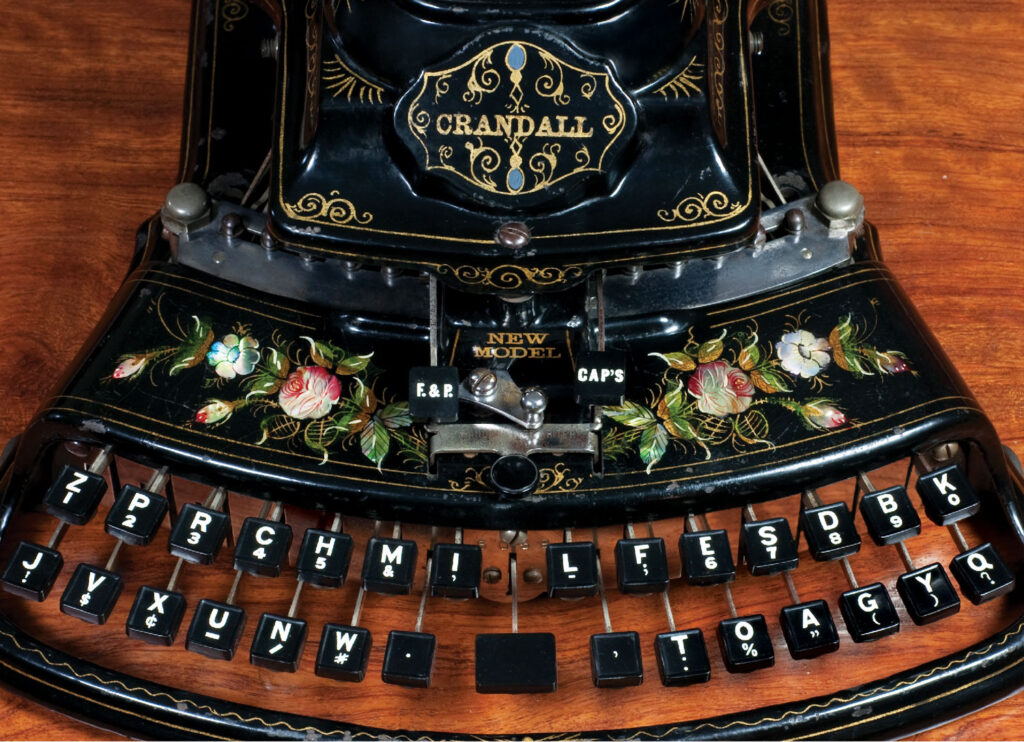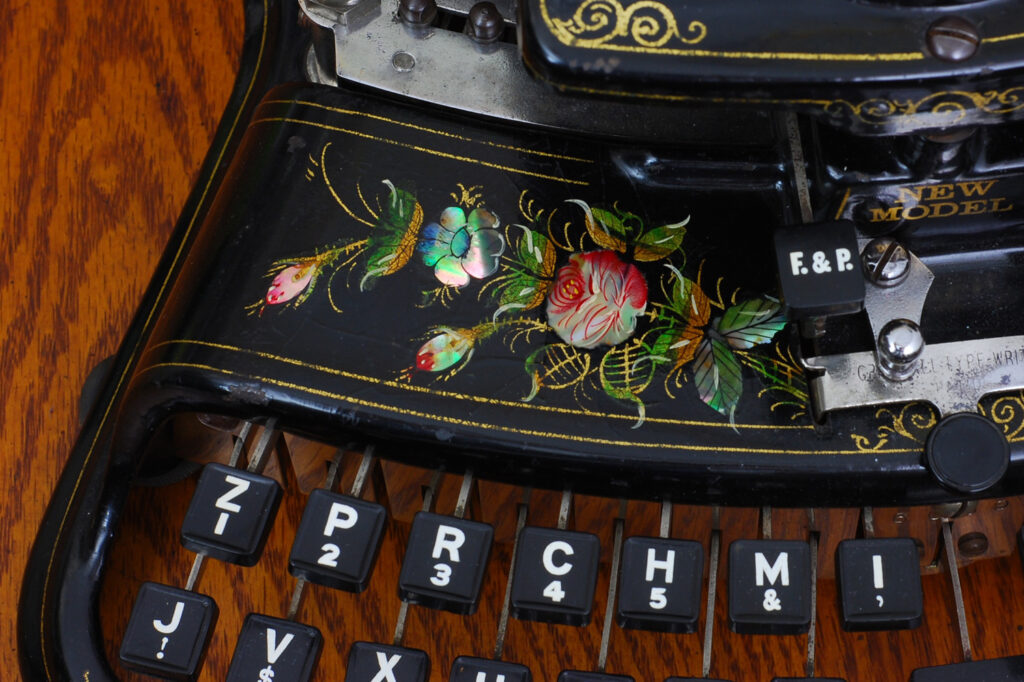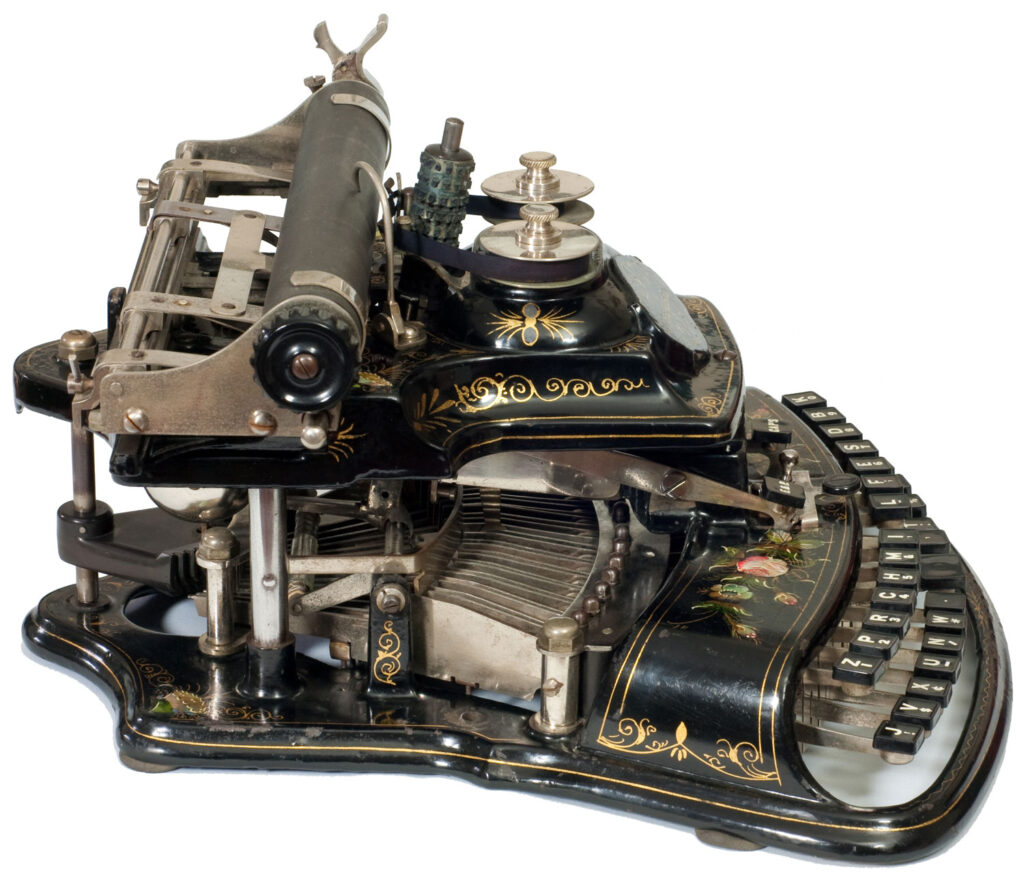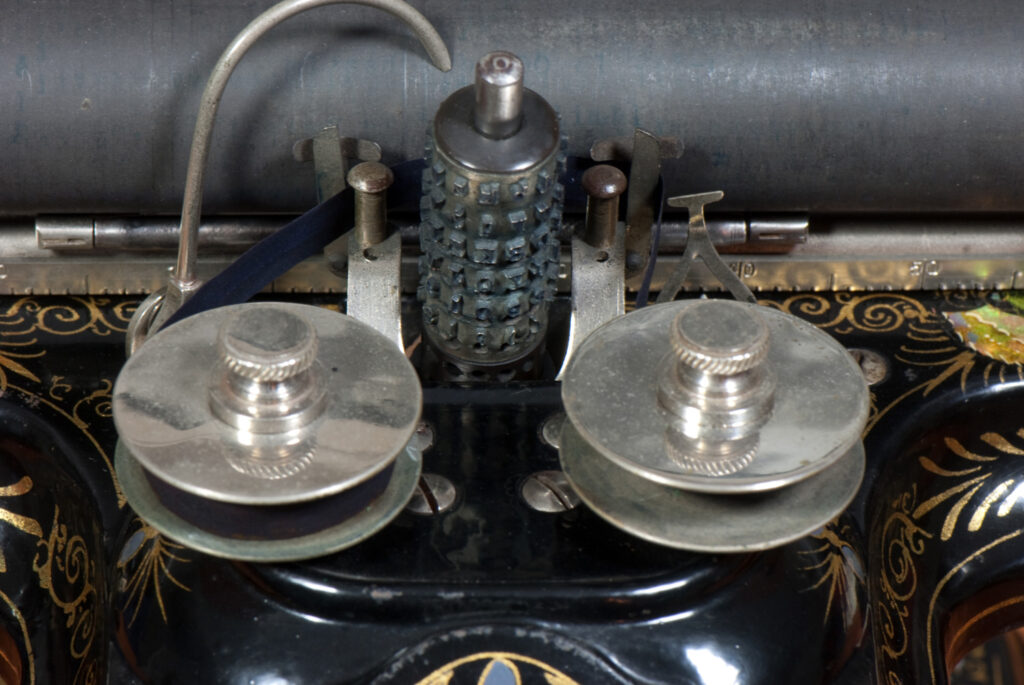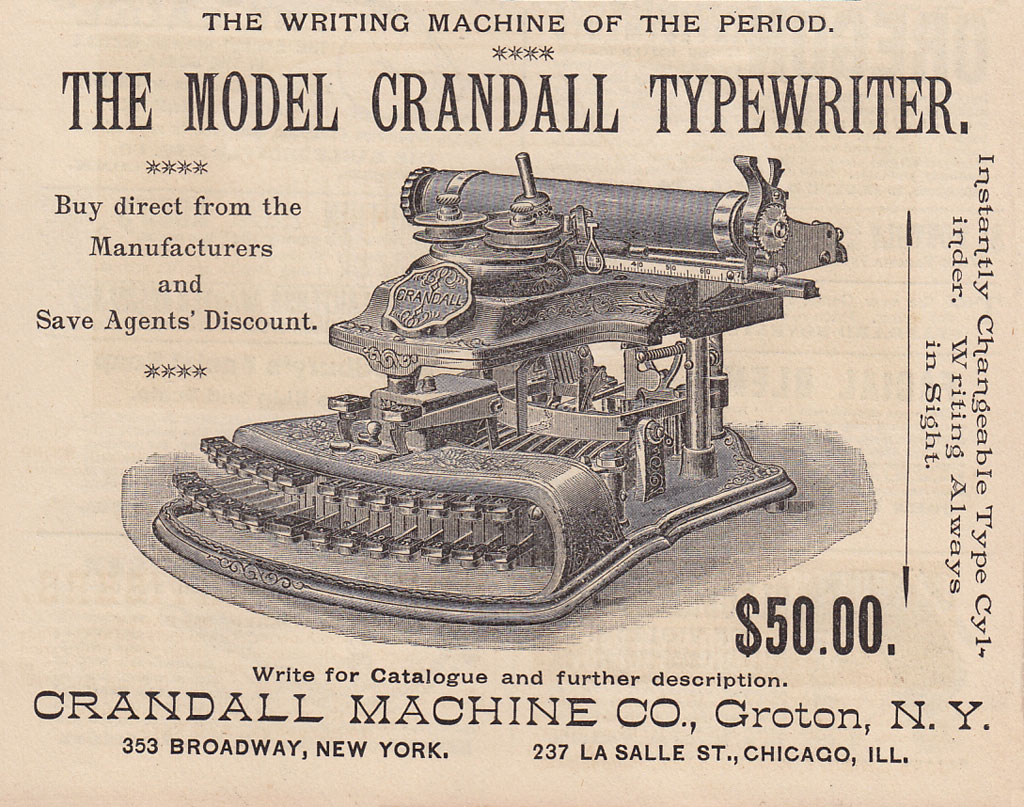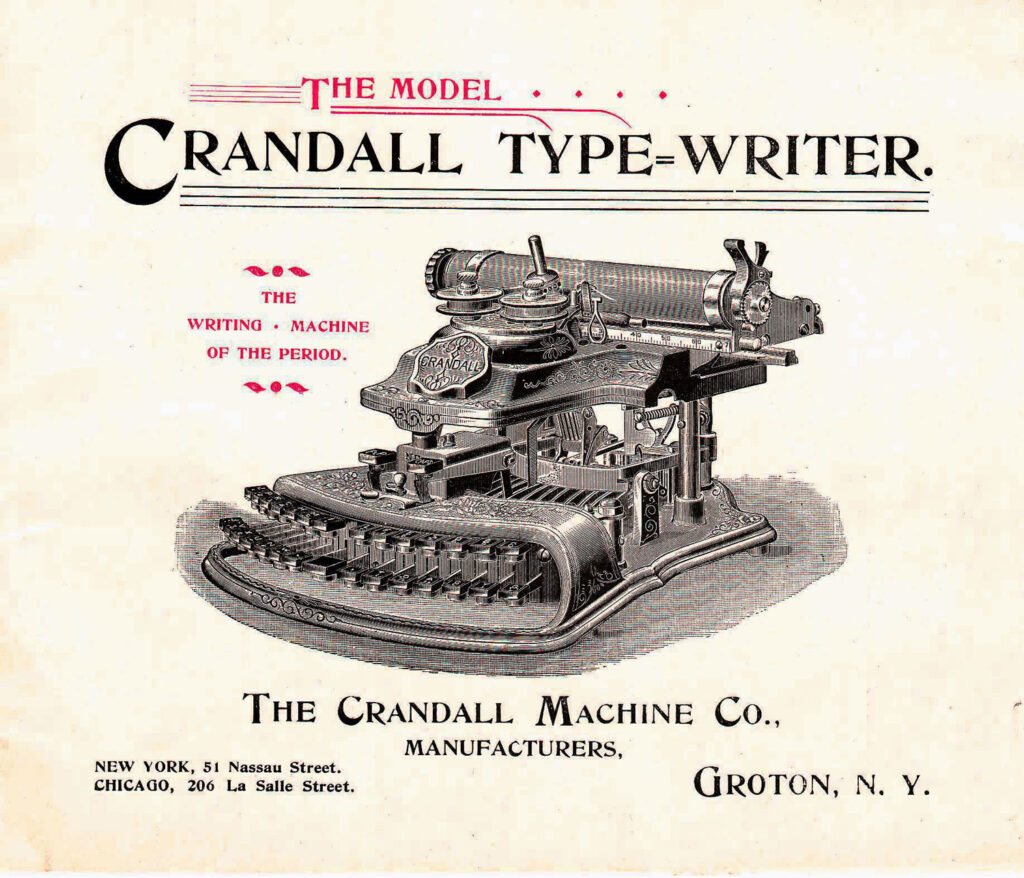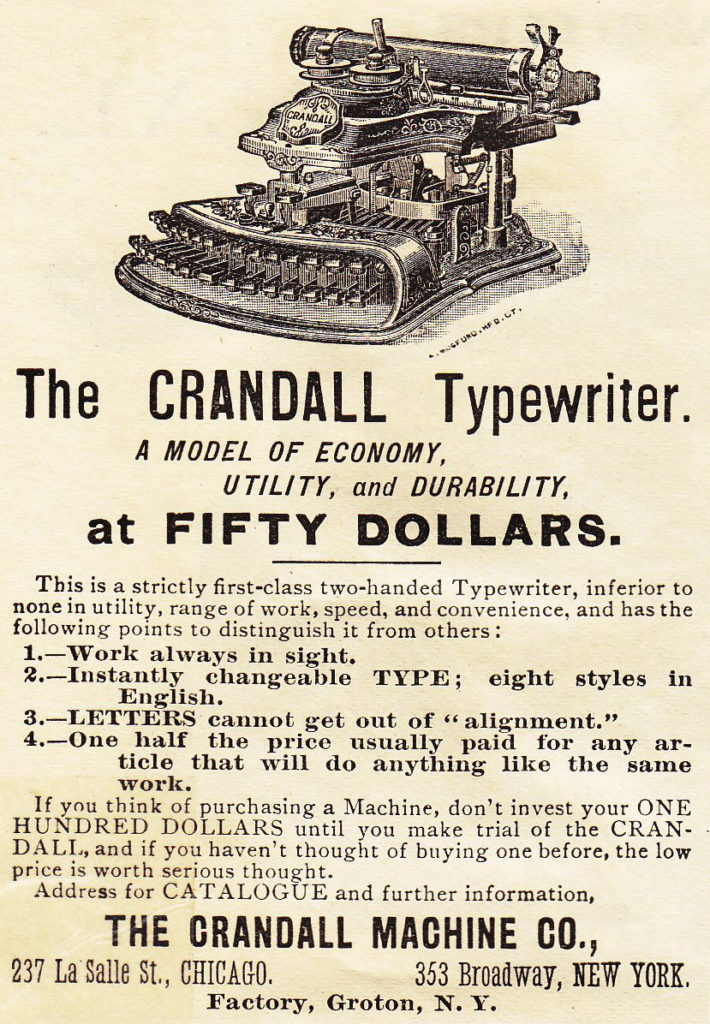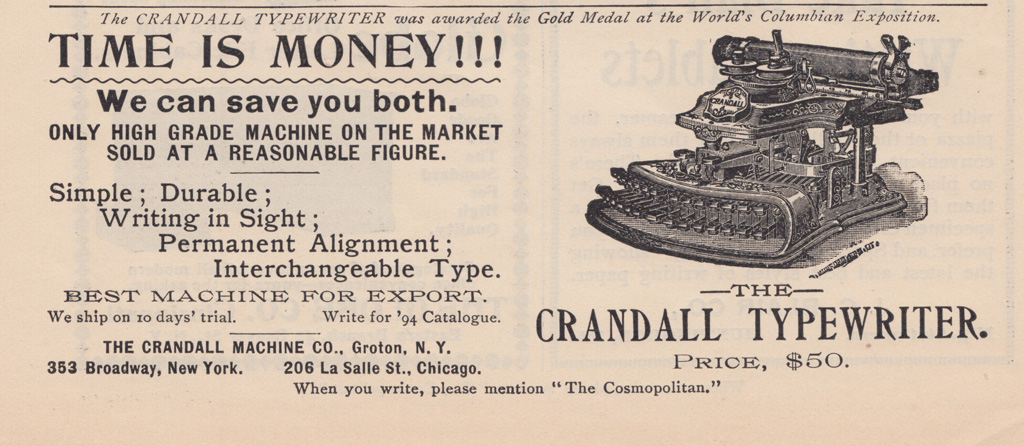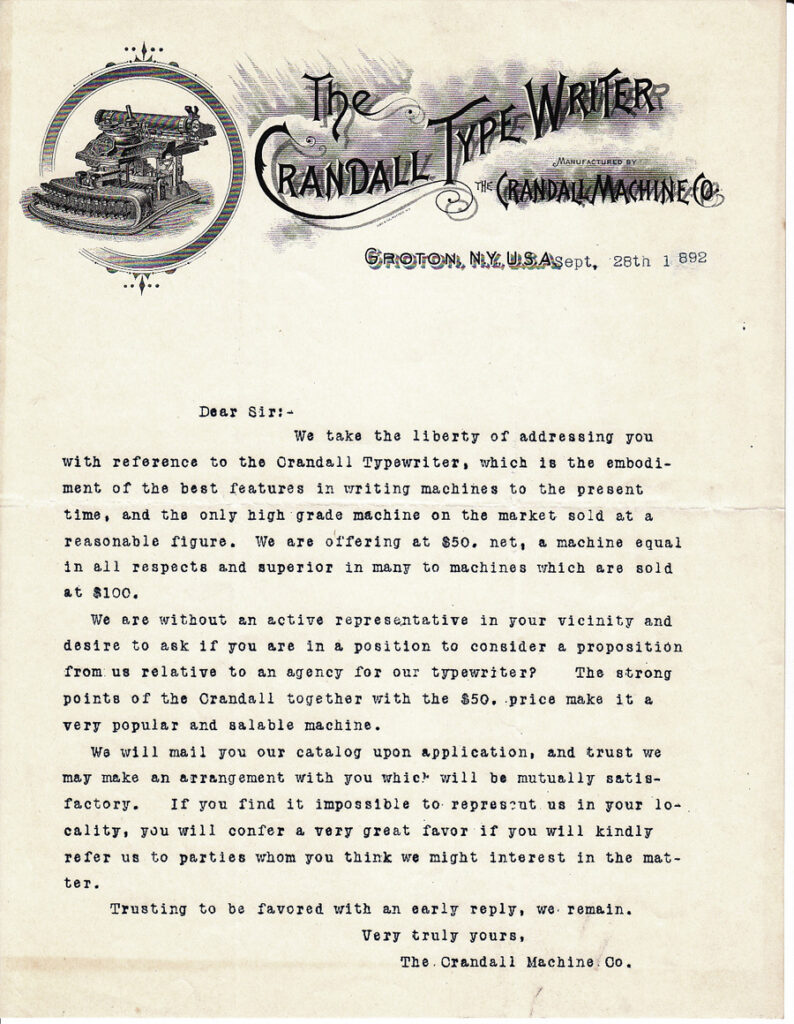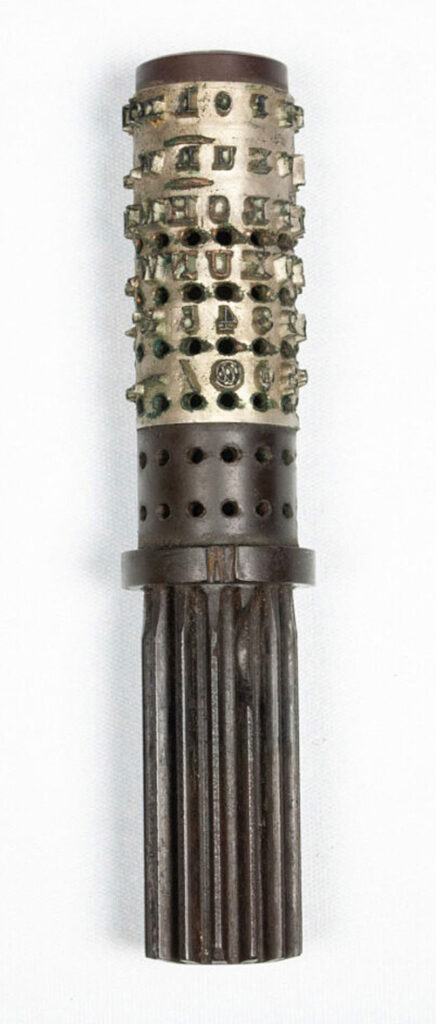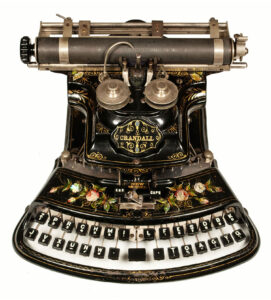 A short video of the Crandall New Model working.
A short video of the Crandall New Model working.
‘The Crandall We Never Knew’ – An illustrated article
The Crandall New Model is one of the most beautiful typewriters ever made. It has a wonderful curved and ornate Victorian design that is lavishly decorated with hand painted roses, accented with mother-of-pearl.
Its predecessor, the Crandall 1 of 1883, was the first typewriter to use a single type element (see image below) — well before IBM’s Selectric typewriter of 1961 with its spherical ‘Golf ball’ single type element. Like the Selectric, the Crandall’s cylindrical type element could easily be changed to type with a different font.
The Crandall New Model has a similar overall design to the Crandall 1 of 1883 but no longer has proportional spacing. Also the central key for lowering the ribbon guide was gone and the mechanism for changing the ribbon direction took on a new design. The Crandall’s type element remained unchanged, being about the size and shape of ones finger (see illustration below). The type element rotates and rises up one or two positions before striking the platen, achieving 84 characters with only 28 keys.
One might well wonder why the type element did not become the standard in typewriter design and why typewriters with type bars did. The reason was speed. Even though type bars (on the standard typewriter) are many separate hammers striking away, each hammer has a very simple and quick action, whereas the single type element of the Crandall is moved through a more complicated mechanical dance, which requires more force to type a character. The IBM Selectric, with its ‘golf ball’, types very fast because the carriage is stationary with just the light platform, that carries the single type element, moving across the page and all is driven by an electric motor.
This typewriter originally sold for $50.00 and $75.00.
“A first class two handed typing machine. Writing in plane sight, even to the last letter. Time is Money!!! We can save you both. Only high grade Machine on the market sold at a reasonable figure.”
